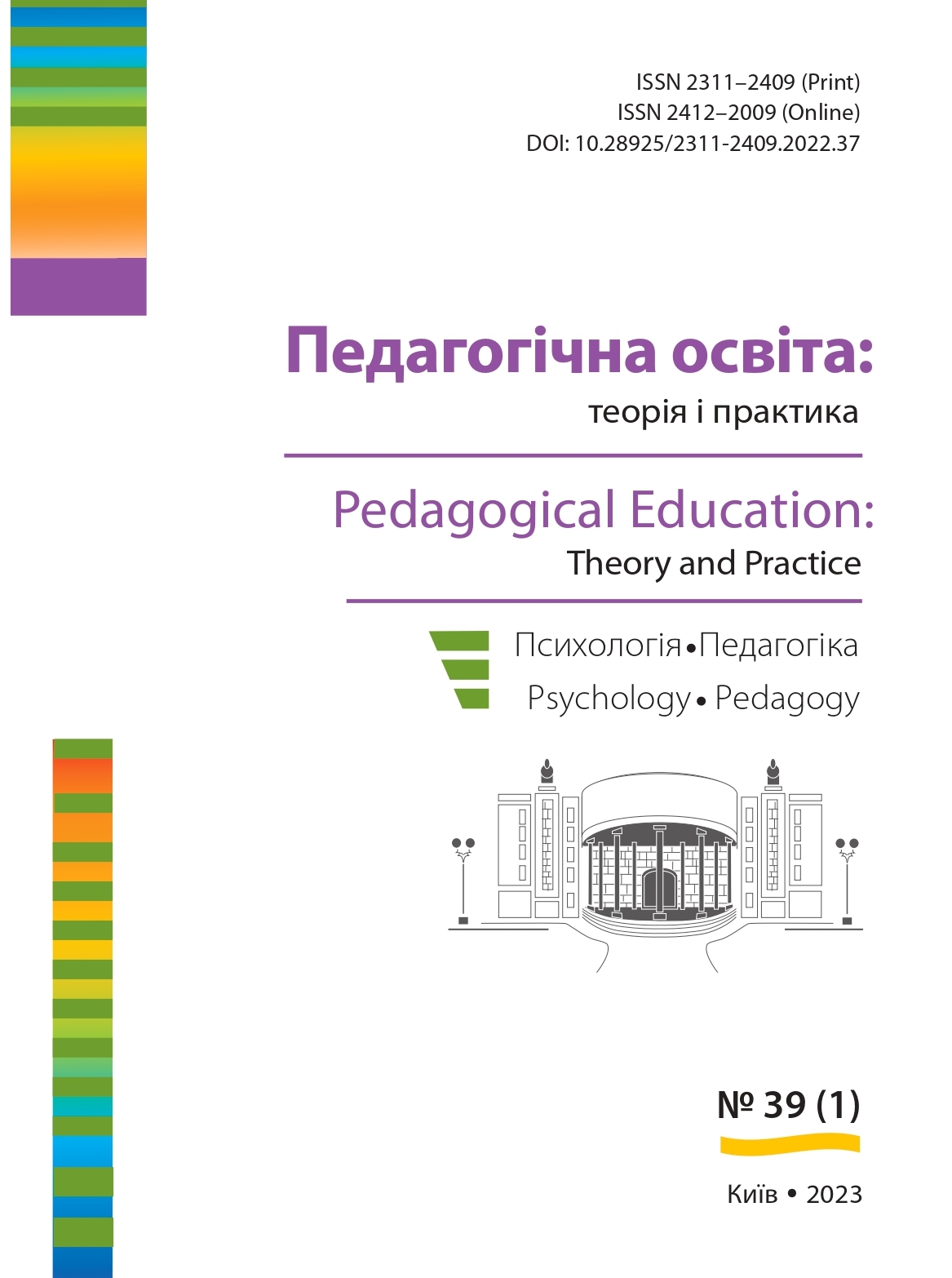Навчання мови білінгвальних учнів засобом книжок-картинок: багатовимірне дослідження у Греції
DOI:
https://doi.org/10.28925/2311-2409.2023.395Анотація
У статті розглянуто питання навчання іноземної мови дітей, які є іммігрантами,
по відношенню до країни, в якій вони перебувають. Розглянуто документи та рекомендації Ради Європи
у цьому питанні; виокремлено позитивний досвід ефективного навчання дітей-іммігрантів другої мови
як іноземної; представлено теоретичні розвідки щодо ефективних методів / технологій навчання
мови тієї країни, в якій вони є іммігрантами. Практичною складовою статті стало багатовимірне
дослідження, проведене у Греції. Аналіз досліджень, на які спирались автори означеної статті,
доводить ефективність застосування саме книжок-картинок у навчанні іноземної мови означеної
категорії дітей. В дослідженні брали участь п’ятдесят дітей 5-річного віку (рідні мови — албанська
та болгарська), які отримували дошкільну освіту в Греції. Результати дослідження спонукають
до важливості створення та застосування подібних книжок-картинок як візуальних посібників
з вивчення іноземної мови. Крім того, вони створюють позитивне середовище для білінгвальних учнів,
що позитивно впливає на досягнення навчальної та виховної мети.
Завантаження
Посилання
REFERENCE
Arizpe, E. & Styles, M. (2003). Children Reading Pictures. Interpreting Visual Texts.Abingdon:
RoutledgeFalmer.
Bader B. (1976) American Picturebooks from Noah’s Ark to The Beast Within. New York: Macmillan.
p.
CollinsDictionary. URL: https://www.collinsdictionary.com/dictionary/english/picturebook (Date
of application: May 05, 2023).
Dunn O. (2003). REALpictureBOOKS — an additional experience in English. In S. Mourão (Ed.),
Current Practices: A Look at Teaching English to Children in Portugal. Book of Proceedings, APPI &
IATEFL 1st Young Learner Conference, Lisbon: APPI, P.106–ll4.
Ellis G., Brewster J. (2014) Tell it Again! The Storytelling Handbook for Primary Teachers (3rd ed.).
London: British Council. URL: http://www.teachingenglish.org.uk/article/tell-it-again-storytellinghandbook-
primaryenglish-language-teachers (Date of application: May 05, 2023).
European Commission (2017) Migrants in European schools: learning and maintaining languages /
Staring F., Day L., Meierkord A. Thematic report from a programme of expert workshops and peer learning
activities. Luxembourg: Publications Office of the European Union, 25 p. URL: http://publications.europa6.
eu/resource/cellar/c0683c22-25a8-11e8-ac73-01aa75ed71a1.0001.01/DOC_1 (Date of application: May
, 2023)
European Education and Culture Executive Agency, Eurydice (2023) Key data on teaching languages
at school in Europe — 2023 edition // Publications Office of the European Union, 2023, URL: https://data.
europa.eu/doi/10.2797/529032 (Date of application: May 05, 2023).
Ghosn I-K. (2013) Storybridge to second language literacy. The Theory, Research and Practice
of Teaching English with Children’s Literature, Charlotte, NC: Information Age Publishing. 231 p.
Kosahrna N., Petryk L. (2021) Organization of future primary school teachers’ professional practice
within the optional block «Foreign Language». Continuing professional education: theory and practice
(series: Pedagogical Sciences). ISSUE № 4 (69), 2021. P. 50-59. DOI: https://doi.org/10.28925/1609-
2021.4.6
Mourão S. (2016) Picturebooks in the primary EFL Classroom: Authentic Literature for an Authentic
Response. CLELE (Children’s Literature in English Language Education) Journal, Volume 4 (1). P. 25 — 43.
Nezhyva L., Palamar S., Marienko M. (2021) Clouds of words as a didactic tool in literary education
of primary school children CTE 2021: 9th Workshop on Cloud Technologies in Education, December 17,
, Kryvyi Rih, Ukraine. P. 381 — 393.
Palamar S., Nezhyva L. (2021) Features of the use of the word cloud in the linguistic and literary field
of primary education. Pedagogical Education: Theory and Practice. Psychology. Pedagogy. P. 54 — 61.
Papadopoulos I. (2020). From classroom translanguaging pedagogy to classroom pedagogy: Supporting
literacy, communication and cooperative creativity. Thessaloniki: Disigma Publications
Papadopoulou Sm. (2018a). Persuasion: the power of persuasion as a teaching tool for learning Greek
as a foreign language. European Journal of Foreign Language Teaching. 3 (2).
Picturebooks in European Primary English Language Teaching (2023) URL: https://www.
teachingenglish.org.uk/news-and-events/webinars/webinars-teachers/picturebooks-european-primaryenglish-
language-teaching (Date of application: May 05, 2023).
Rudnik Y. (2023) The use of Augmented Reality and Virtual Reality Technologies in Teaching Foreign
Languages. Educological discourse. Issue 1(40). P.165 — 183. https://doi.org/10.28925/2312-5829.2023.110
Shulevitz U. (1985). Writing with pictures: How to write and illustrate children’s books. New York:
Watson-Guptill Publications. 271 p.
Yilmaz S., Yükse M., Canel A.N. (2015) Investigating Preschool Children’s Perceptions of the Concepts
of “Good” and “Bad” through the Method of Picture Analysis

